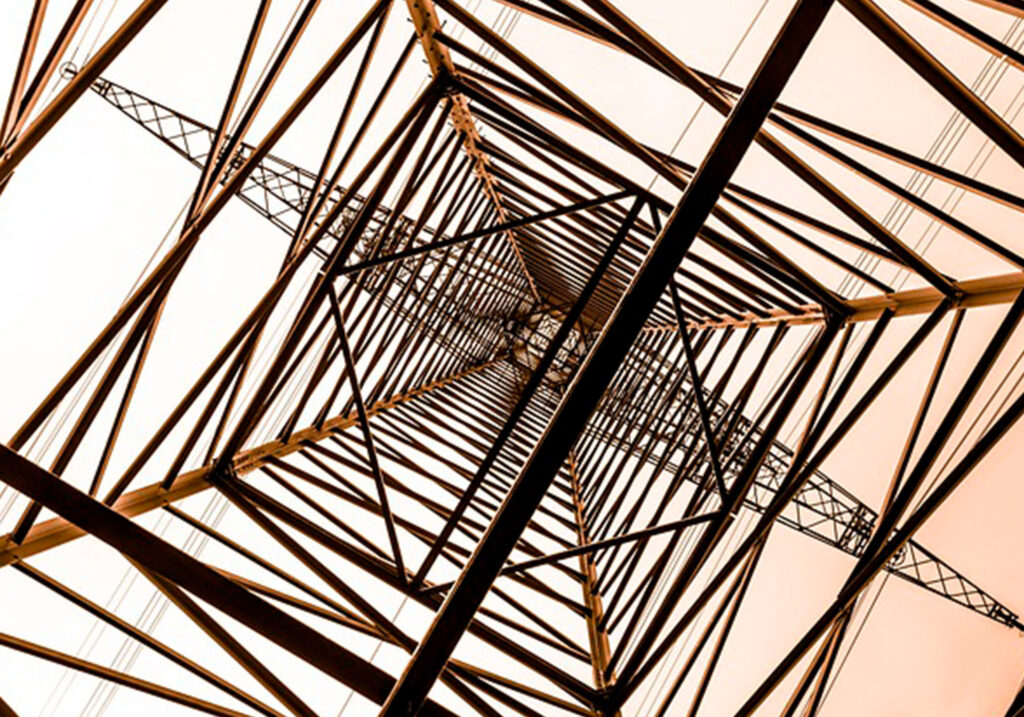In a recent post, we were able to discuss cold-form steel. In this blog, we will go through the specifics of what a rigid frame metal building is.
Rigid frame metal buildings have revolutionized the construction industry with their durability, cost-efficiency, and design flexibility. These structures are widely used for commercial, industrial, agricultural, and even residential purposes due to their robust engineering and adaptability.
Understanding the core aspects of rigid frame metal buildings can help property owners and builders make informed decisions about construction projects.
Definition of Rigid Frame Metal Buildings
Rigid frame metal buildings are steel structures characterized by a solid framework of steel beams and columns. These frames form the structural skeleton of the building, providing unparalleled strength and support. The design typically involves clear-span construction, which means the interior space is free from supporting columns, offering unobstructed space for various applications. The combination of vertical columns and horizontal or sloped roof beams forms a rigid connection that efficiently transfers loads and resists deformation.
One of the key advantages of rigid frame metal buildings is their versatility. The clear-span design allows for a wide range of uses, from industrial warehouses and manufacturing plants to commercial retail spaces and agricultural facilities. This flexibility makes them an ideal choice for businesses and organizations that require large, open areas without the interference of interior columns.
Components of Rigid Frame Metal Buildings
The primary components of rigid frame metal buildings include:
- Primary Frames: These consist of columns and rafters that create the main structure. They are designed to bear the majority of the building’s loads.
- Secondary Members: Purlins, girts, and bracing systems distribute loads and provide additional support to the primary frame.
- Roof and Wall Panels: Typically made of steel, these panels are attached to the secondary frame, offering weather protection and structural stability.
- Foundation: A concrete slab or piers anchor the structure and provide a stable base.
- Accessories: Doors, windows, insulation, and ventilation systems complete the building’s design and functionality.
Advantages of Rigid Frame Metal Buildings
Strength and Durability
Rigid frame metal buildings are engineered to withstand extreme weather conditions, including high winds, heavy snow loads, and seismic activity. Steel is inherently strong and resists warping, rotting, and insect infestations. This resilience makes these structures ideal for various climates and applications. The robust nature of steel ensures that the structural integrity of the building remains intact over many years, even under challenging environmental pressures.
Additionally, the durability of rigid frame metal buildings translates to lower maintenance requirements. Unlike wood, which can deteriorate over time due to moisture or pests, steel requires minimal upkeep. Protective coatings further enhance its resistance to corrosion and rust, extending the building’s lifespan and reducing repair costs. This durability makes rigid frame steel buildings a reliable and long-lasting choice for both commercial and industrial applications.
Cost-Effectiveness
The prefabrication of steel components leads to significant savings in construction time and labor costs. Clear-span designs eliminate the need for interior support columns, maximizing usable space and reducing material costs. This efficient use of materials also helps streamline the construction process, making rigid frame metal buildings a cost-effective option for large-scale projects.
Long-term savings are also realized through minimal maintenance and energy-efficient designs. Steel buildings can incorporate insulation and energy-efficient roofing systems to reduce heating and cooling costs. Furthermore, the longevity of steel structures minimizes the need for costly repairs and replacements, providing excellent value over the building’s entire lifecycle.
Design Flexibility
Rigid frame metal buildings offer unparalleled design flexibility. They can be customized to fit a wide range of applications, from warehouses and factories to retail spaces and recreational facilities. The absence of interior columns allows for adaptable floor plans and easy future expansions, enabling owners to adjust layouts as business needs evolve.
Additionally, various architectural finishes can be applied to enhance the aesthetic appeal of steel buildings. From modern facades to traditional designs, rigid frame metal buildings can be tailored to meet specific functional and visual requirements. This versatility makes them suitable for both practical industrial use and sophisticated commercial developments.
Quick Construction
Prefabricated steel components streamline the construction process. Once the foundation is in place, the steel frame can be erected quickly, reducing project timelines and labor expenses. This accelerated construction process is beneficial for projects with tight deadlines, allowing businesses to become operational faster and start generating revenue sooner.
Moreover, the simplicity of assembling prefabricated components minimizes the likelihood of construction errors, leading to safer and more efficient project execution. This rapid construction capability also reduces site disruptions and labor costs, making rigid frame metal buildings a preferred choice for time-sensitive projects.
Sustainability
Steel is one of the most sustainable building materials available. It is 100% recyclable, and many rigid frame metal buildings are made from recycled steel. The production process for steel has also become more energy-efficient, reducing the environmental impact associated with construction.
The energy-efficient designs of steel buildings contribute to reduced energy consumption. Features such as reflective roofing, advanced insulation systems, and natural lighting solutions help lower utility costs and carbon footprints. This sustainable approach not only benefits the environment but also supports green building certifications and eco-conscious business practices.
Types of Rigid Frame Metal Buildings
Clear Span Rigid Frame
Clear span rigid frame buildings are engineered to provide wide, open interior spaces without the need for interior support columns. This design maximizes usable floor space, making it ideal for applications that require unobstructed layouts, such as warehouses, gymnasiums, and aircraft hangars. The absence of columns allows for flexible interior configurations, accommodating large equipment, machinery, or even sports courts. This adaptability enhances operational efficiency by allowing for seamless movement and optimal space utilization.
Additionally, the clear span design offers architectural flexibility, enabling customizations to suit specific business or operational needs. Businesses can easily incorporate mezzanines, overhead cranes, or specialized storage solutions without the limitations imposed by interior supports. The open design also allows for easier future modifications or expansions, making clear span rigid frame buildings a long-term, adaptable solution for growing operations.
Multi-Span Rigid Frame
Multi-span rigid frame buildings utilize interior support columns to distribute roof loads across wider spans. This design is ideal for larger structures where a clear span is impractical due to size constraints or cost considerations. Manufacturing plants, distribution centers, and large-scale industrial facilities commonly use multi-span designs because they can efficiently support heavy roof loads and accommodate wide building footprints. The interior columns allow for greater structural efficiency and can reduce overall construction costs by using smaller and lighter framing materials.
Moreover, multi-span structures provide the flexibility to organize the interior space according to operational needs. The presence of interior columns can be leveraged to support equipment, storage racks, or mezzanine levels. This design also enables cost-effective scalability for businesses that require vast, organized spaces to manage inventory, production lines, or logistics operations.
Single Slope Rigid Frame
Single slope rigid frame buildings feature a roof that inclines in one direction, offering a practical solution for managing water drainage and snow accumulation. This design is commonly used for retail stores, office complexes, and commercial structures that need to align with existing buildings or infrastructure. The sloped roof ensures efficient runoff of rainwater and snow, reducing the risk of structural damage and minimizing maintenance needs over time.
Additionally, the single slope design provides an attractive modern aesthetic and can be easily integrated with other architectural elements. It offers the flexibility to incorporate storefronts, entrances, or loading docks on the lower side of the slope, enhancing accessibility and functionality. This design is particularly advantageous for businesses looking for cost-effective, visually appealing, and practical building solutions.
Lean-To Rigid Frame
Lean-to rigid frame buildings are designed to attach to existing structures, offering a cost-effective solution for expanding available space. These buildings are ideal for creating additional storage areas, workshops, offices, or covered loading docks without the need for constructing a completely new building. By sharing a wall with the existing structure, lean-to additions minimize construction costs and material usage while maximizing space efficiency.
The lean-to design is highly versatile and can be customized to meet a variety of needs. Whether providing a sheltered area for equipment, expanding retail floor space, or creating additional work areas, lean-to structures offer an economical and practical way to enhance building functionality. Their adaptability makes them suitable for both commercial and industrial applications, offering seamless integration with the main structure while allowing for future expansions if needed.
Applications of Rigid Frame Metal Buildings
Rigid frame metal buildings serve a wide range of industries and purposes:
- Commercial: Retail stores, office buildings, and shopping centers.
- Industrial: Warehouses, manufacturing plants, and distribution centers.
- Agricultural: Barns, storage sheds, and livestock shelters.
- Recreational: Gymnasiums, sports complexes, and community centers.
- Residential: Modern homes and accessory dwelling units.
Considerations for Building a Rigid Frame Metal Building
Site Preparation
Proper site preparation is critical. This includes soil testing, grading, and installing a solid foundation to support the structure.
Design Customization
Work with architects and engineers to customize the building’s design. Consider factors like size, layout, insulation, and aesthetic features to meet specific needs.
Compliance with Building Codes
Ensure the building complies with local building codes and zoning regulations. Obtain necessary permits before construction begins.
Maintenance Requirements
While steel buildings require minimal maintenance, regular inspections and preventative care will extend the structure’s lifespan and ensure safety.
Conclusion
Rigid frame metal buildings provide a powerful combination of strength and efficiency. Their durable construction make them an excellent choice for a wide variety of applications. They provide long-lasting value and performance. With proper planning and execution, these structures can meet and exceed the demands of modern construction.

